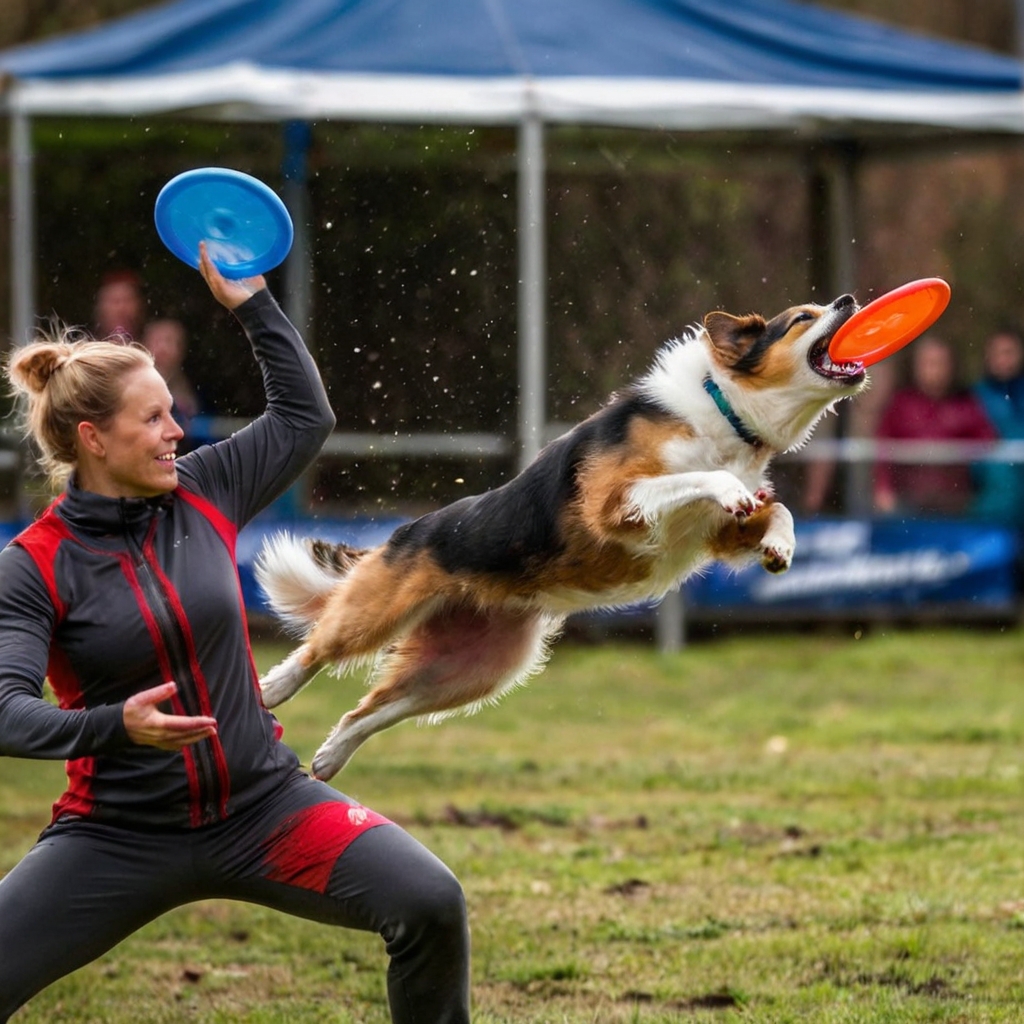When it comes to socializing a dog, especially one that is trained to play frisbee, it’s essential to consider their unique needs and circumstances. Frisbee dogs are often high-energy breeds that require regular exercise and mental stimulation. They thrive on interaction with their owners and can become quite focused on the game of catch. However, this focus can sometimes make them less aware of their surroundings, including other dogs and people. Socialization is crucial to help your frisbee dog become comfortable and confident around others, ensuring they can enjoy the game without becoming overwhelmed or aggressive.
Understanding Socialization
Socialization is the process of exposing your dog to various environments, people, and other animals to help them become confident and calm in new situations. For frisbee dogs, socialization is vital to prevent fear or aggression towards other dogs and people, which can arise from a lack of exposure or negative experiences. The socialization period for puppies is critical, typically occurring between 8 and 16 weeks of age. However, socialization should be an ongoing process throughout a dog’s life, especially for those involved in high-energy activities like frisbee catching.
Initial Steps in Socialization
To begin socializing your frisbee dog, start with controlled environments where you can manage the level of interaction. This could be as simple as taking your dog on regular walks around the neighborhood or visiting local dog parks. The key is to expose your dog to a variety of sights, sounds, and experiences in a positive and controlled manner. Initially, keep interactions brief and positive, rewarding your dog with treats and praise for calm behavior. Gradually increase the duration and intensity of these interactions over time, always paying close attention to your dog’s body language and behavioral cues.
Strategies for Socialization Around Other Dogs
Socializing your frisbee dog around other dogs requires careful planning and execution. Here are some strategies to consider:
- Start with Visual Introductions: Before allowing dogs to meet, start by having them see each other from a distance. This can help reduce initial reactivity and allow for a smoother introduction.
- Use Positive Reinforcement: Reward your dog for calm behavior around other dogs. This could be with treats, praise, or even a game of frisbee.
- Choose Calm Environments: Avoid areas with high dog traffic or noise levels for initial introductions. Instead, opt for quieter spaces where your dog can feel more at ease.
- Gradually Increase Interaction Time: Begin with short introductions and gradually increase the time as your dog becomes more comfortable.
- Monitor Body Language: Always watch for signs of stress or aggression in both your dog and the dog they are interacting with. If you notice any negative cues, it’s best to intervene early and separate the dogs.
Socialization Around People
Socializing your frisbee dog around people is just as important as socializing them around other dogs. People can be unpredictable, and their noises, movements, and clothing can be alarming to dogs. Here are some tips for socializing your frisbee dog around people:
Expose your dog to a variety of people, including different ages, genders, and ethnicities. Encourage people to interact with your dog calmly and gently, offering treats if your dog is receptive. Avoid pushing your dog beyond their comfort zone; if they appear stressed or uncomfortable, it’s best to remove them from the situation and try again another time. Consistency and patience are key when socializing your dog around people.
Once your frisbee dog has become more comfortable around other dogs and people, you can begin to integrate frisbee play into these social situations. Start by playing catch in areas with minimal distractions, gradually increasing the level of activity and noise. This could mean playing near other dogs that are not playing frisbee or in areas with more people traffic. The goal is to help your dog understand that the game of catch is not affected by the presence of others and that they can focus on the game while still being aware of their surroundings.
Conclusion
Socializing a frisbee dog requires dedication, patience, and a well-planned approach. By understanding the principles of socialization and applying them in a controlled and positive manner, you can help your dog become confident and calm in the presence of other dogs and people. Remember, socialization is an ongoing process, and consistent effort will yield the best results. With time and practice, your frisbee dog will not only excel at the game but also become a well-adjusted and sociable companion.
